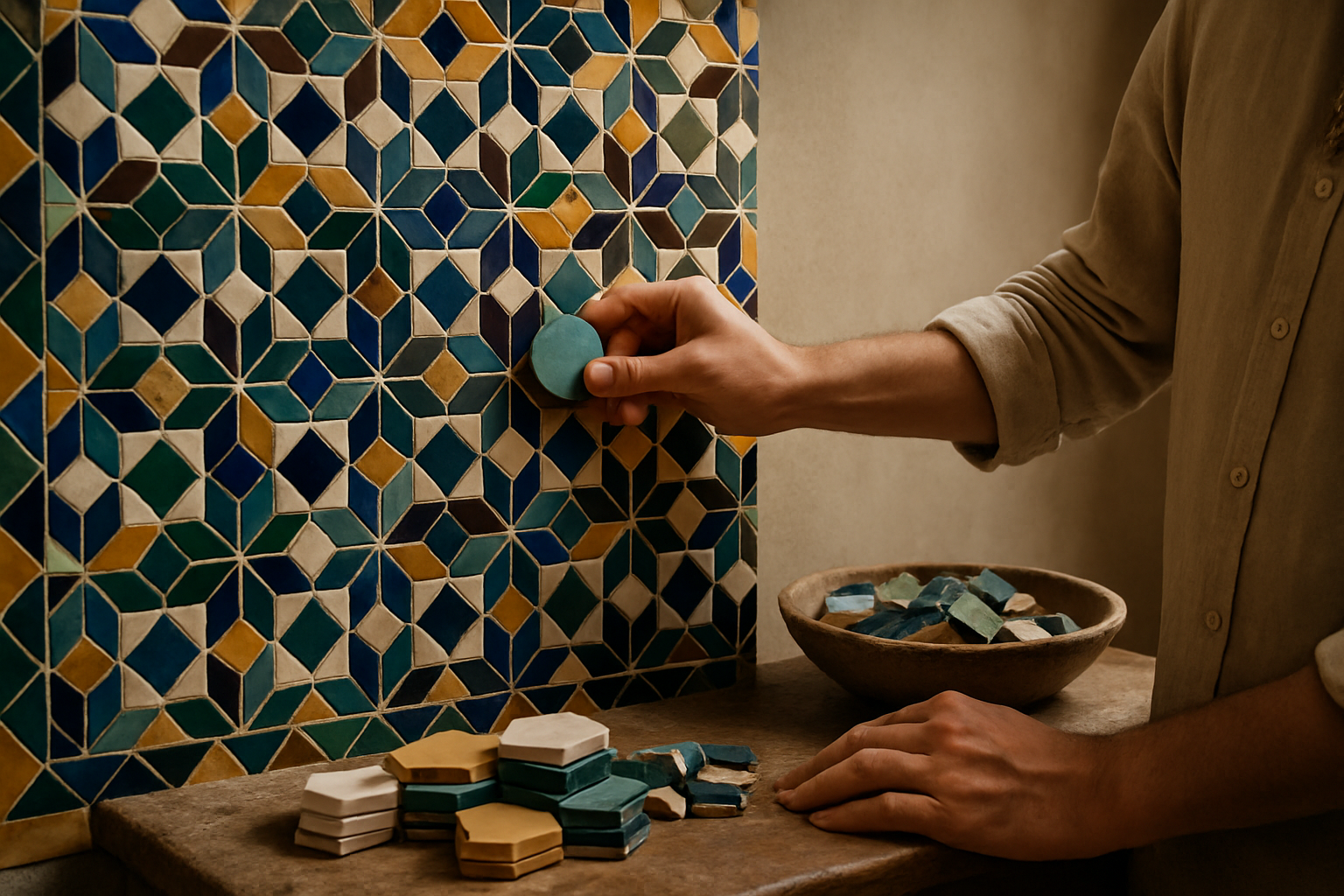Embracing Wabi-Sabi: The Art of Imperfect Beauty in Home Design
In a world obsessed with perfection, a revolutionary design philosophy is gaining momentum. Wabi-sabi, the ancient Japanese aesthetic that celebrates imperfection, transience, and incompleteness, is making waves in contemporary home design. This article explores how embracing wabi-sabi can transform your living spaces into havens of authenticity, mindfulness, and serene beauty.

The Roots of Wabi-Sabi
Wabi-sabi’s origins can be traced back to 16th century Japan, emerging from Zen Buddhism and the traditional Japanese tea ceremony. The term combines two concepts: ‘wabi,’ which refers to the beauty of simplicity and humility, and ‘sabi,’ which embraces the passage of time and the beauty of aging.
Initially, wabi-sabi was more of a spiritual and philosophical concept than a design aesthetic. It encouraged people to find contentment in the simple, imperfect aspects of life. Over time, this mindset naturally influenced Japanese art, architecture, and design, giving rise to a distinctive aesthetic that values rustic simplicity, natural materials, and the marks of time and use.
In the West, wabi-sabi remained relatively unknown until the late 20th century. As globalization brought increased cultural exchange, designers and homeowners began to appreciate this alternative to the polished perfection that dominated Western design. Today, wabi-sabi offers a refreshing counterpoint to the sleek minimalism and mass-produced uniformity that have long held sway in modern interiors.
Key Principles of Wabi-Sabi Design
Embracing wabi-sabi in home design involves more than just a set of decorating rules. It’s a holistic approach that touches every aspect of how we create and inhabit our living spaces. Here are some key principles to consider:
-
Authenticity: Wabi-sabi celebrates the genuine and the handmade. It favors natural materials and objects that show their age and history.
-
Simplicity: Clutter is the antithesis of wabi-sabi. This aesthetic prizes minimalism, but not in a stark or clinical sense. Instead, it’s about curating a space with intention, keeping only what is truly meaningful or necessary.
-
Imperfection: Rather than hiding flaws, wabi-sabi highlights them. A cracked vase might be repaired with gold, following the Japanese art of kintsugi, turning imperfection into a feature.
-
Nature and Organic Forms: Wabi-sabi design brings the outside in, incorporating natural elements and favoring organic shapes over rigid geometries.
-
Patina and Wear: Objects that show their age and use are prized. This could be anything from a well-worn leather armchair to a wooden floor that bears the marks of countless footsteps.
Implementing Wabi-Sabi in Your Home
Bringing wabi-sabi into your living space doesn’t require a complete overhaul. It’s more about shifting your perspective and making thoughtful choices. Here are some ways to incorporate wabi-sabi principles:
-
Choose Natural Materials: Opt for materials like wood, stone, clay, and natural fibers. These not only look beautiful but also age gracefully, developing character over time.
-
Embrace Imperfection: Don’t discard items because of small flaws. A chipped plate or a scratched table can add character to your space.
-
Incorporate Handmade Items: Support local artisans by including handcrafted pieces in your decor. These unique items bring soul and story to your home.
-
Create a Connection with Nature: Bring in plants, use natural light, and choose colors inspired by the earth and sky.
-
Practice Mindful Curation: Regularly assess your possessions, keeping only what truly adds value to your life. This doesn’t mean living with bare spaces, but rather surrounding yourself with items that have meaning and purpose.
The Psychological Benefits of Wabi-Sabi Interiors
Beyond its aesthetic appeal, wabi-sabi design can have profound effects on our mental wellbeing. In a world that often feels chaotic and demanding, a wabi-sabi home provides a sanctuary of calm and authenticity.
Research has shown that our physical environment significantly impacts our mental state. A study published in the Journal of Environmental Psychology found that cluttered spaces can increase stress levels and decrease focus. Wabi-sabi’s emphasis on simplicity and intentional curation can help create a more peaceful, less overwhelming environment.
Moreover, the acceptance of imperfection that is central to wabi-sabi can be psychologically liberating. In a culture that often equates perfection with success, embracing wabi-sabi can help us let go of unrealistic standards and find contentment in the present moment.
Wabi-Sabi and Sustainability
One of the most compelling aspects of wabi-sabi design is its inherent sustainability. In an era of fast fashion and disposable decor, wabi-sabi encourages us to buy less, choose well, and make things last.
By valuing objects that age well and can be repaired, wabi-sabi pushes back against the throwaway culture that contributes to environmental degradation. It promotes a more mindful approach to consumption, encouraging us to invest in quality pieces that will stand the test of time.
Furthermore, the wabi-sabi appreciation for natural materials often leads to choices that are better for the environment. Opting for organic fabrics, reclaimed wood, or locally sourced stone not only creates a more authentic aesthetic but also reduces the carbon footprint of our homes.
The Future of Wabi-Sabi in Home Design
As we move further into the 21st century, the principles of wabi-sabi seem more relevant than ever. In a world grappling with environmental challenges and the pressures of an always-on digital culture, the call for simplicity, authenticity, and connection with nature resonates deeply.
We’re likely to see wabi-sabi influencing not just interior design, but architecture and urban planning as well. Imagine buildings that are designed to age beautifully, neighborhoods that incorporate natural elements more seamlessly, and cities that value the patina of history alongside modern innovations.
The beauty of wabi-sabi lies in its flexibility and universality. It’s not a rigid set of rules, but a mindset that can be adapted to any style or cultural context. Whether you live in a bustling city apartment or a rural farmhouse, the principles of wabi-sabi can help create a home that feels authentic, peaceful, and deeply connected to the rhythms of life.
In embracing wabi-sabi, we’re not just changing our homes – we’re shifting our perspective on what truly matters. We’re learning to find beauty in the imperfect, value in the well-worn, and peace in simplicity. In doing so, we create spaces that nourish our souls and remind us of our connection to the natural world and to each other.




